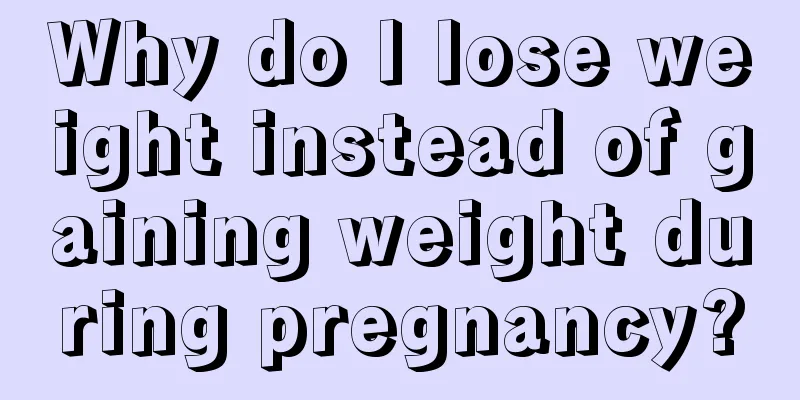Fetal movement at 23 weeks of pregnancy

|
The pregnancy process is very long. During this process, the development of the fetus will be different every day. At the 23rd week, the fetus will move and the mother will obviously feel something strange in her belly. This is relatively normal. This period is quite special. We must always pay attention to the development of the fetus, have regular prenatal checkups every week, check the health of the fetus, and ensure the fetus's development trajectory. The following is a detailed introduction. Fetal movement refers to the movement of the fetus in the uterine cavity that impacts the uterine wall. The fetus stretches its hands, kicks its legs, and hits the uterine wall in the uterus. This is fetal movement. After 4 months of pregnancy, the fetal movement can be clearly felt. Fetal movement is one of the important contents in clinical prenatal fetal monitoring technology. The number, speed, strength, etc. of fetal movements indicate the safety of the fetus. Although various fetal movement counting methods are used clinically, the ideal fetal movement count and interval have not yet been determined. Under normal circumstances, the fetus moves at least 3 to 5 times in 1 hour, and the number of obvious fetal movements in 12 hours is more than 30 to 40 times. Some fetuses can move about 100 times in 12 hours. As long as the fetal movements are regular, rhythmic, and do not vary much, it proves that the fetal development is normal. The number of fetal movements is not constant. During the 28th to 38th week of pregnancy, the fetal movement is active, and then it weakens slightly until delivery. The pregnant woman's movement, posture, emotions, loud noises, strong light, and touching the abdomen can all cause changes in fetal movement. The fetal movements that pregnant women can feel first appear in the middle of the lower abdomen and often have several different types. 1. Fetal movement in early pregnancy There are several different types of fetal movements in early pregnancy seen by ultrasound. At 7 to 8 weeks of pregnancy, slight wave-like movements of the embryo can be seen; small twitches appear around 9 weeks; they become more obvious after 9 weeks; stronger twitches can be seen between 9 and 10 weeks; and after 10 weeks, stronger movements such as fluttering, floating and jumping appear. 2. Fetal movement after the second trimester There are more types, such as startle, whole body movement, isolated upper or lower limb movement, flexion and extension of the head, head turning, turning, stretching, opening the mouth, touching the face with hands, burping, yawning, sucking, swallowing, etc. These exercises reach their peak between 13 and 15 weeks of pregnancy and gradually decrease after 17 weeks. 3. Fetal movement after full term As the baby approaches full term, especially after 38 weeks, there are fewer large-scale body movements, and only eye movements, mouth opening, hand activities, and breathing movements can be observed. |
<<: Is it good for a woman to have thick lips?
>>: Why does my mouth feel sour after pregnancy?
Recommend
What to drink when eating hot pot is too spicy? What to drink when eating hot pot to relieve the spiciness
We all know that hot pot is a common delicacy. It...
How to confirm that the gestational sac has fallen out
The gestational sac is very important for embryo ...
38 weeks, I feel a sense of falling, how long will it take to give birth?
A woman's body will undergo significant chang...
What to do if you have an MRI two weeks into your pregnancy
When a woman is just about two weeks pregnant, th...
Will taking short-acting contraceptive pills delay menstruation?
In our daily life, some women who are afraid of g...
What is the best thing to eat during confinement?
After giving birth, women will spend about a mont...
How to treat endometrial inflammation?
Endometritis can be said to be one of the gynecol...
Crucian carp soup and pig's trotter soup are the most effective? There is still a lot that mothers should know about "milk production"
Author: Tang Qin, Deputy Secretary-General and Re...
If the following two points of liver cirrhosis occur, you should be alert!
Patients with cirrhosis will have a tendency to b...
Why does vaginal bleeding occur during intercourse?
When a woman has sexual intercourse for the first...
Menstruation is delayed for 10 days and has not come yet
For women, "period" is a barometer of f...
To be honest, over-medicalization (I)
This is the 5171th article of Da Yi Xiao Hu In th...
How to detect pelvic inflammatory disease?
Diseases can only be cured with timely treatment,...
Dark skin on face, there are ways to whiten the face
As the saying goes, white skin can hide ugliness,...
What to do if you have irregular bleeding during ectopic pregnancy
Some married female friends want to have a child ...









